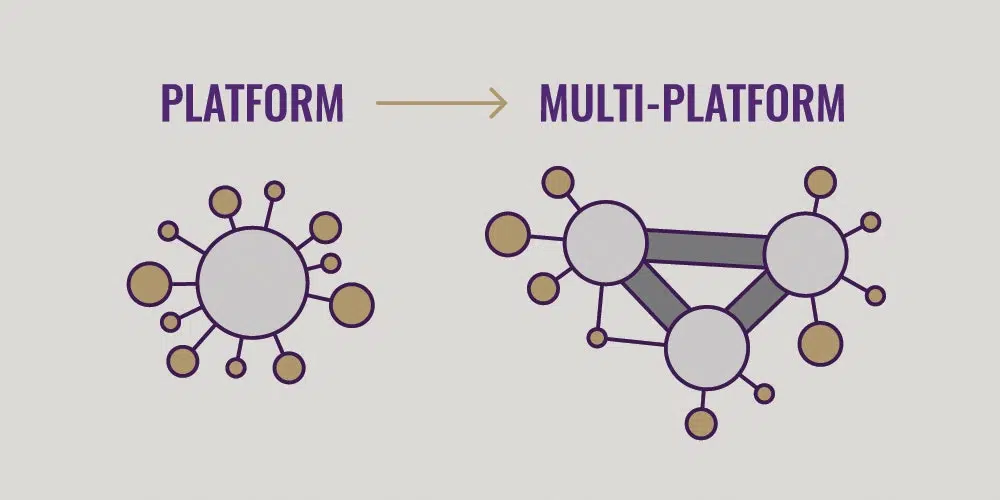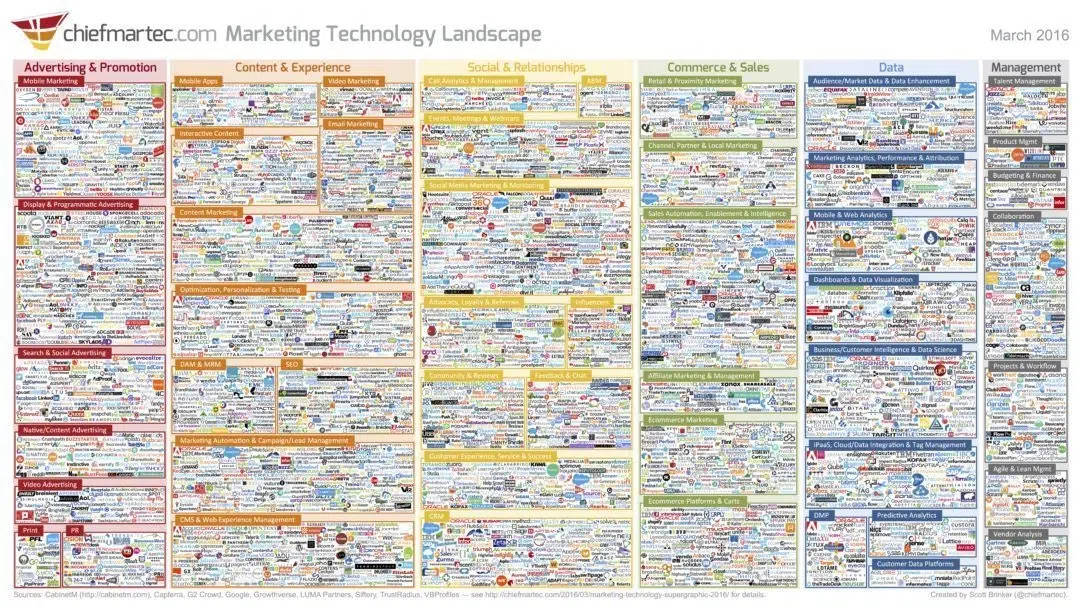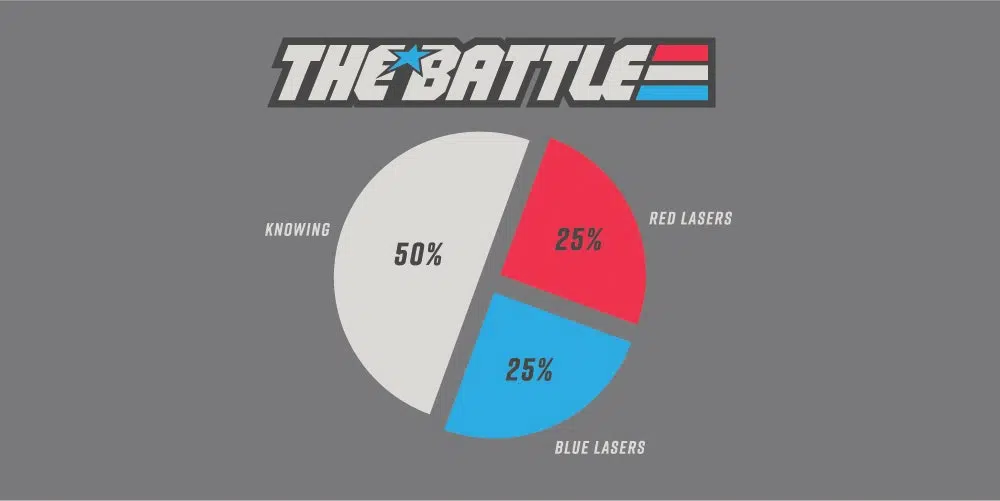Is your marketing working? How do you know? In our four-part series, we’re taking a look at marketing technology and helping you diagnose what you need in your martech stack to answer the crucial question: are my marketing dollars worth it?
Now that we’ve covered how to build a technology stack for segmenting your audience, it’s time to talk about conversion attribution – understanding how to see which marketing initiatives are really driving conversions – and which are duds.
Post Hoc Fallacy
Long, long ago, in a digital space far, far away, marketing success was predicated on the post hoc fallacy. That means the assumption was that because there was a conversion, it must have been as a result of whatever efforts came immediately before (i.e. “after this, therefore because of this”). Marketers would send an email, and if conversions increased around the same time they must have come directly from the email. Or a paid search campaign was launched and the next day you landed a large client, so it must have been because of your awesome ads.
The sad fact is that even as companies have expanded the number of platforms they use and the information at their fingertips is vaster than ever before, many marketers in 2017 continue to rely on the same old attribution models that don’t accurately account for the impact of all platforms. While it used to be that your attribution flowed from a single platform, forward-thinking companies these days rely on a multitude of platforms within their tech stack, each with their own attribution data points.
As companies continue to push for greater accountability and return on investment from marketing efforts, marketers need a clear understanding of what works and what doesn’t. And advanced attribution is the only way to evaluate and understand the impact of all the touchpoints that drive to conversion.
Credit Where Credit Is Due
Within organizations, effective marketing attribution is often seen as the holy grail when it comes to truly understanding the impact of each channel as part of the conversion path. And rightfully so. With proper attribution comes better insights, smarter strategy, and greater return on investment.
According to the AdRoll State of the Industry, “91% of marketers recognize the importance of marketing attribution.” So why do so few utilize it effectively? Well, that’s where it gets complicated.
As the digital marketing ecosystem continues to evolve away from the traditional funnel we’re used to and towards a complex cluster of touchpoints, many organizations are struggling to keep up. A Forrester study commissioned by Google found that simplistic attribution (first- or last-touch) still reigns supreme, with 40% of enterprise firms still utilizing those models to measure their digital marketing performance.
The Growing of the Marketing Technology Stack
The aggressive expansion of digital touchpoints across innumerable networks in recent years has, in turn, driven the complexity of the marketing technology stack, as the graphic below demonstrates quite clearly. The data sources associated with these new touchpoints not only serve to provide better insight, but also drive additional layers of complexity when it comes to attribution. But that advanced attribution is exactly what allows companies to truly understand which touchpoints affect the path to conversion.
As users engage with companies through an ever-expanding universe of channels and devices, marketers must adapt their analytical approach and measurement techniques/platforms to accurately understand the efficacy of their marketing strategy. Even just a few years ago, digital marketers could rely on first-click/last-click models to determine the impact of our efforts. If a visitor to your website converted, these models assumed (by their very nature) that a user was solely influenced by either the first or last channel prior to conversion. The problem with this model today is how misleading it can be. Convenient? Yes. Accurate? No.
For example, let’s say a customer saw your banner advertisement on a third-party website. A few days later they see a Facebook ad promoting your products, and they decide to peruse your website to see if you have what they’re looking for. They don’t convert, they simply browse. Then a few months later they search for your product on Google, click your organic search result, and finally purchase on your website. Does that mean that the banner ad on the referring domain should get credit for the revenue generated, since it was the first channel? Or is it the last channel, organic search, that drove that revenue? Heck, did you even think to consider what devices they were doing all this on?
Working Smarter, Not Harder
Developing an accurate multi-channel attribution methodology offers marketers a holistic view of the path to conversion, illuminates opportunities for improving strategy, and allows marketers to measure the return on their efforts. If we as marketers ever hope to fully understand the impact of our efforts, we must remain committed to the adoption of advanced attribution, driven by the complexity of the market, process development, and alignment on goals. For those who have already adopted advanced attribution as part of their martech stack, it’s allowing them to market the right content to the right audiences in the right places at the right time. Right? Right.Data-savvy marketers who are equipped with the right martech stack to identify and exploit these deeper insights will triumph over those who are not.
Data-savvy marketers who are equipped with the right martech stack to identify and exploit these deeper insights will triumph over those who are not.
Define Your Approach to Data
A complete view of your data across all touchpoints is the only way to ensure accurate attribution that will inevitably inform an engaging marketing strategy to drive conversion.
Companies that cannot expand their approach to analytics beyond the basics will never be able to fully capitalize on the benefits of accurate attribution, which will significantly hinder their understanding of the customer journey.
Instruct and Enable
Advanced attribution requires ongoing education of team members regarding methodology and approach. While many marketers understand the importance of attribution, few understand the difference between varying attribution models. Companies must enable their teams to develop actionable strategy based on advanced attribution data gleaned from the various platforms within your martech stack.
Measured, algorithmic attribution data should be incorporated into both short- and long-term marketing campaigns and strategy. Those companies that don’t effectively utilize attributed results to make attribution actionable will continue to rely on unproductive marketing strategies based on inconclusive data.
The Right Tools for the Job
Most platforms (analytics, marketing, CRM, etc.) allow for extensive measurement and attribution, which affords companies the tools to delve into what the results mean and how to make them actionable. Conducting in-depth analysis and testing based on attribution data will allow marketers to translate that data into actionable marketing strategy.
Knowing Is Half the Battle
Attribution will continue to grow both in terms of its importance and complexity, which is why it’s crucial for marketers to focus on attribution within your technology stack. Arming your team with the skills and tools necessary to gather and leverage advanced attribution data will have a multiplier effect on your business success. Ensuring your team has the appropriate mindset, methodology, and tools in place within your technology stack will set your company up to act on that attribution data.
Attribution is a never-ending process, but that doesn’t mean it’s futile; quite the opposite. Attribution is knowledge and as G.I. Joe always says – “Knowing is half the battle.”
So we’ve covered why you need a strong marketing technology stack in the first place how to build a stack best suited for audience segmentation and attribution. But what happens once you’ve invested in all of that infrastructure, only to find your investments underutilized or poorly implemented. We’ll cover the issue of what prevents organizations from using the technology they purchase in the last part of our series.
Part 1: Why You Need a Strong Marketing Technology Stack
Part 2: Why You Need a Strong Marketing Technology Stack: Audience Segmentation
Part 4: 3 Reasons Why the Marketing Technology You’ve Purchased Doesn’t Get Used
Companion Piece: Your 2017 Marketing Toolkit







